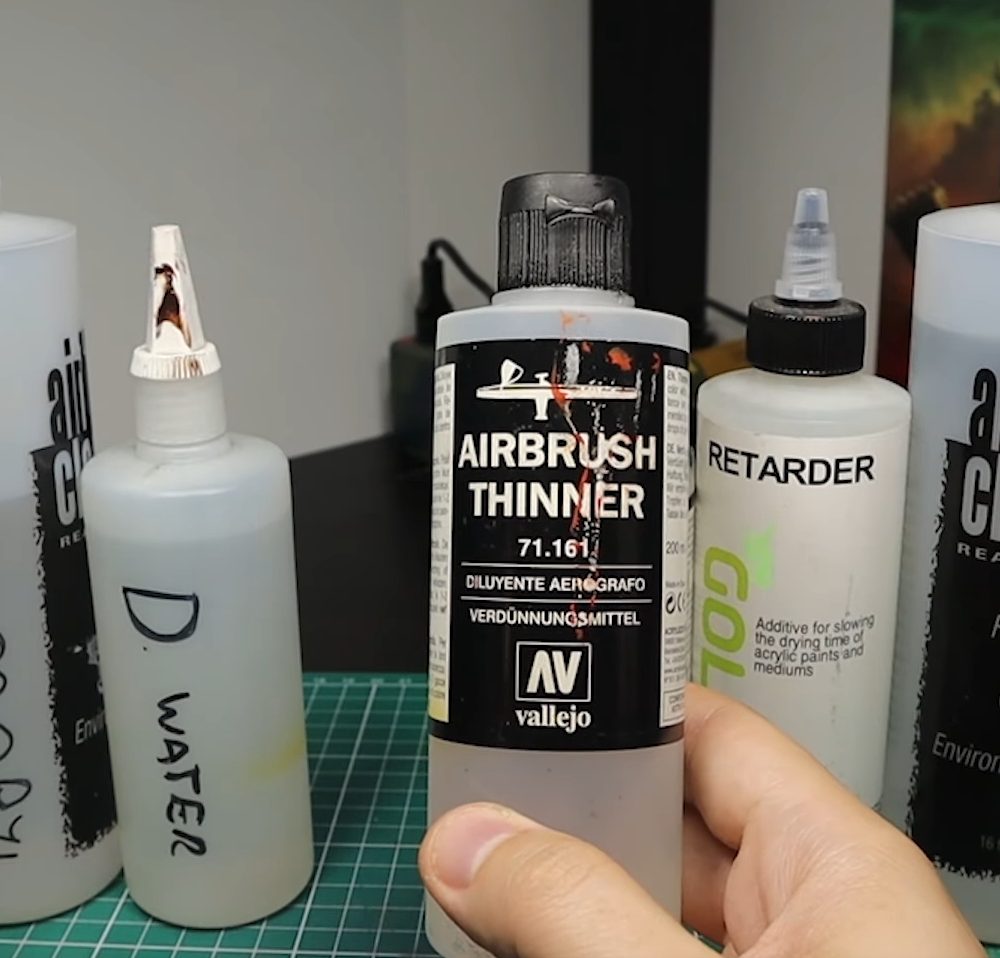
If you have already read the article on how to buy an airbrush, you have chosen and bought an airbrush; if you already have a compressor, then the next step is to choose paints.
The choice of paints that can be used in airbrushing is huge. There are paints specifically for airbrushing as well as paints that are suitable for spraying through the airbrush.
The paint is chosen depending on the application of the airbrush. If you are just a beginner and the main criteria for choosing paint are its low cost and availability, this paint has to pass at least easily through the nozzle of your airbrush.
For example, some paints, even some specialty airbrush paints, require a nozzle of 0.5 mm. This should be written on the label. Even straining through paint strainers won’t help you use them for a smaller nozzle size. The nozzle size requirements are driven by the size of the pigment – the paint particles.
If you decide to try “dusting” with leftover paint that your children or younger siblings use (acrylic paints for children’s art, gouache), not all paints may be suitable for airbrushing. Acrylic paint can be very coarse, and by rubbing it between your fingers, you can see particles of paint. Such paint, even with water or vodka, can not be diluted. An airbrush with a 0.3 mm nozzle size can not blow it off properly.
Gouache, unlike acrylic, is well diluted with water and blown through the nozzle. For the first lessons on paper, such paint will be enough.
If you are unhappy with paper as an airbrushed surface or have decided to go for metal surfaces (surfaces for airbrushing), gouache is unsuitable for you. In a small town, you can find airbrush paints in art stores. They have paints specifically for airbrushing. For example, it could be Jacquard paints. As I wrote above, you must make sure that this or that paint is suitable for your airbrush.
Do not trust the seller and read the label before buying. If the label does not specify the nozzle size for your airbrush, do not take a set of many colors at once, but if possible, take a single color. After trying it out, you can buy more colors of the same brand. And many manufacturers of paints for airbrushing have a product line that includes metallic, transparent, and opaque colors. You must also be careful when choosing metallic colors because some are not blown through the nozzle less than 0.5 mm.
Another option for buying paint can be to order online. Nowadays, a lot of online stores offer paints specifically for airbrushing. The detailed description and recommendations on the site will help you choose the one that will suit you.
The advantage of special paints for airbrushing is the absence of odor, allowing using them in the living room. Such paints maybe not only ready for use (i.e., they have the necessary consistency), but they may be completed with a special solvent.
Most paints can be diluted with water, alcohol, or vodka. The advantage of dilution with alcohol or vodka is that airbrush paint dries up faster than water-diluted paints. Also, the dilution with vodka or alcohol can protect the drawing from paint leaks.
Special paints for airbrushing can also include luminous paints, which in airbrushing add an interesting effect of glowing in the dark. Such paints contain luminophores – pigments that accumulate daylight.
Another option could be to buy paint at auto enamel picks. In any tiny city, you can find stores that sell auto enamels and tinting colors for car owners. In such stores, you can buy the paint suitable for airbrushing by weight. The product lines of car paints have a wide range of different colors that you can see and choose from the samples (fans). Among the paints are opaque, transparent, and metallic. In addition, pearlescent colors are also available.
You need to tell the salesperson that you need a “base.” A base is a paint that requires a coat of varnish. Bases from the same manufacturer can be mixed to match the right shade. It can be poured in various quantities. I poured 40-50 grams. You can also pour in your own container, which can be more convenient than disposable. These paints are very saturated, and you have to dilute them with solvent to the right consistency. The store can sell you the “original” thinner (from the same manufacturer as the paint), but it will be much more expensive than the 646 thinner appropriate for airbrushing.
The disadvantage of these paints is their strong odor. In combination with solvent, they are a “rattlesnake mixture” and pose a health hazard. It is prohibited to use these paints in living areas and requires personal protective equipment (respirators) when working.
There are many manufacturers of automotive paints on the American market. Each region has its own specifics; in addition, sales of a particular paint depend on the seller. So for the Far East region of the USA, Japanese manufacturers are more common: Kansai, RockPaint. These paints are based on urethane, have in their product line polyurethane varnishes. When you cover the paint, varnish penetrates to the base (primer or metal), which creates a single strong coating after drying.
If a paint sprayer is focused on selecting paints for domestic cars, it may offer budget paint products with hardeners that do not require lacquer coating. Such paint is not good enough for airbrushing because after drying, it becomes glossy, and subsequent layers flake off with time.